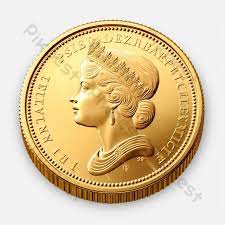The Iranians are actively buying up gold to protect themselves from the risks of depreciation of the national currency and rising cost of living, while the US is preparing to impose economic sanctions against the Islamic Republic. In this regard, gold prices in Tehran are hitting records, according to an article in The Wall Street Journal, cited by Dow Jones.
On Tuesday after midnight US Eastern Time, the Trump administration is expected to enact the first wave of restrictions, which were lifted as part of a deal struck under US President Barack Obama, when Iran received sanctions relief in exchange for curtailing its nuclear programs.
In May, President Trump authorized the US withdrawal from the international agreement on the Iranian nuclear program due to dissatisfaction with Iran’s military and political actions in Syria, Lebanon and other Middle Eastern countries. New sanctions restrict Iran’s foreign exchange transactions and interaction with Iran in the automotive industry. The sanctions also penalize banks that finance the precious metals trade with Iran and individuals who sell precious metals to the Iranian government.
Worried about the instability of the national economy and given the issuance of new coins by the central bank, Iranians are turning their savings into gold, even despite a sharp rise in prices. Demand for gold bars and coins tripled in Iran in Q2 to 15 tons year-over-year, according to data from the World Gold Council released Thursday. The Iranian central bank minted hundreds and thousands of new coins weighing more than 60 tons of gold in total to meet this demand.
Inflation and unemployment in Iran have topped 10% this year, and the Iranian economy is expected to contract next year amid sanctions. The Iranian rail has seen a record drop this year, from $1 worth 43,000 rials in January to 101,000 rails recently, according to Bombast, a website that tracks unofficial exchange rates.
The second wave of US sanctions against Iran will be introduced in November and is intended for the Iranian oil and transport industries. US pressure on Asian consumers of Iranian oil has already led to a reduction in oil sales, which form a significant part of the income of the Islamic Republic.
Economic instability causes discontent among the Iranian population. In December, demonstrations took place in Iran, which turned out to be the most massive in almost a decade. Last week, the protests became even more violent, with demonstrators frequently clashing with police and calling for the government to step down. Protests in the city of Karaj, west of Tehran, killed one person and injured 20 others on Friday, according to Fars, a semi-official Iranian news agency.
Iranians traditionally give gold coins for holidays and buy gold jewelry for weddings. However, gold prices have recently risen much more than demand.
This year, people lined banks to pre-order Emmi coins at central bank auctions, where they often sell below market prices.
The price of an 8.13 gram Emmi coin issued by the central bank was roughly 36 million rials as of Sunday, double the levels in January. A week ago, the price reached a record high of more than 45 million rials. Demand for gold in Iran is also growing despite the negative dynamics of the global gold market; spot prices are down more than 6% this year to around $1,200 an ounce.
However, gold sellers in Tehran are not benefiting much from high demand, which is more focused on gold coins.
According to one of the owners of a gold shop in Tehran, he does not see a large influx of buyers, and because of high prices, it is becoming more and more expensive to restock the assortment.
“If I sell a decent amount of merchandise – about 40 grams – I worry about how to replenish it (due to high prices), and not about the lack of metal,” he notes.
In the 2nd quarter, the demand for jewelry in Iran fell by 36% compared to the same period last year and reached an absolute minimum by the standards of the World Gold Council. The reason for this is partly the 9% VAT, and also the fact that the Iranians have become more invested in investments, rather than in jewelry.
As jewelry prices hit record highs, many people buy them out of necessity. So, the programmer, who introduced himself as Bani, noted that he was looking for decorations for the wedding.
“I have no choice,” Bani says. “I go to the jewelry store just because I can’t do without it. Otherwise, now is not the best time for such purchases.”
Lack of other options for sound investment in a relatively isolated economy with underdeveloped finance
At the end of last year, Iran’s central bank resumed Emmi coin auctions in an attempt to stabilize prices and limit Iranians’ foreign currency investment, which has weakened the rail.
The demand for gold is so high that the rate of growth in the price of coins even exceeds the rate of decline of the rail against the dollar. Excluding fluctuations in the rail, the price of the Emmi coin has risen by 9.5% since January, from $346 to $379.
In recent months, Iranian authorities have been prosecuting those who buy coins in an attempt to keep their prices high. In July, police arrested a 58-year-old man who was dubbed “King of Coins” by the local media. Allegedly, with the help of numerous accomplices, he acquired 2,000 central bank coins with the goal of gradually selling them as prices rise.





